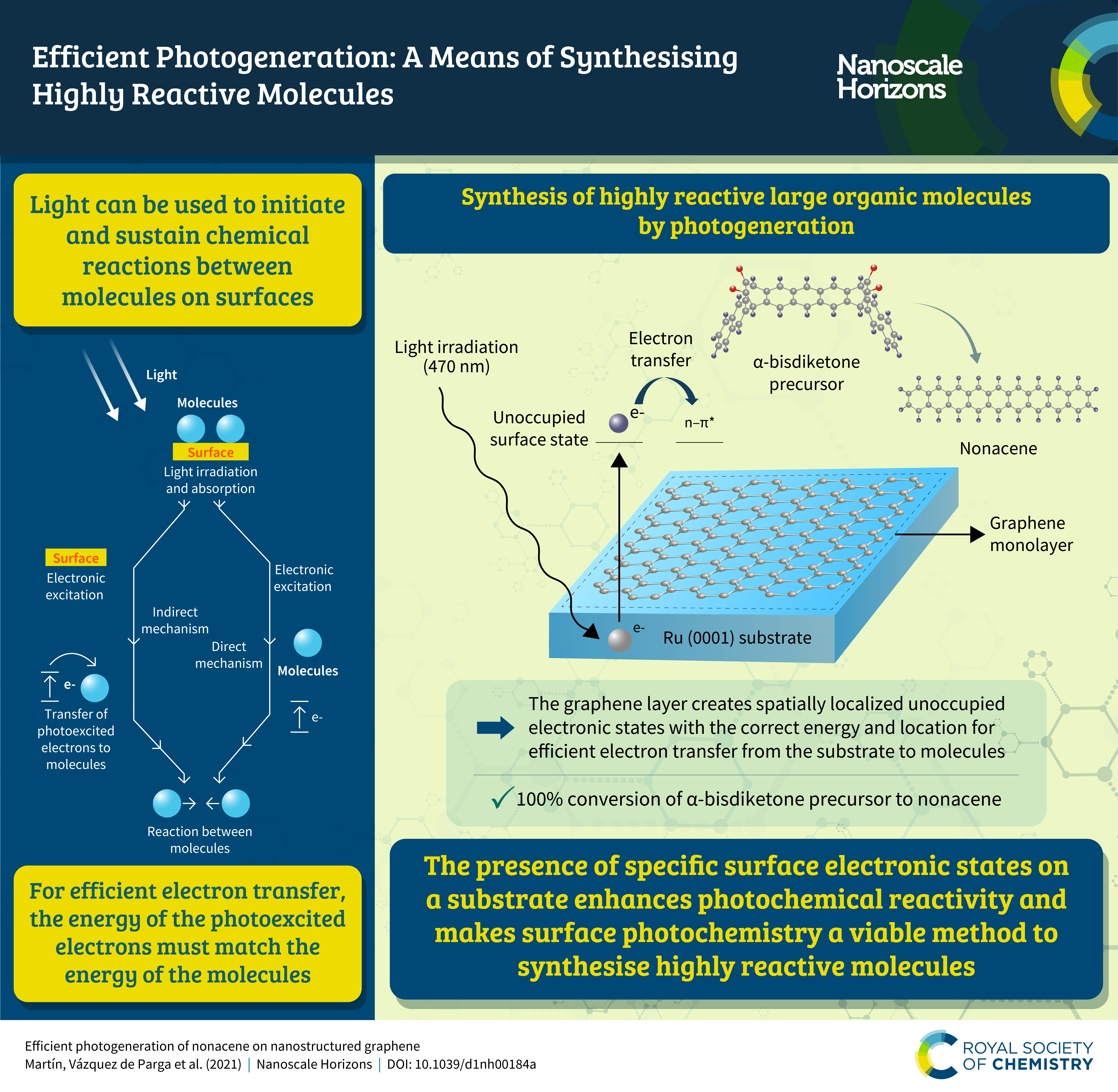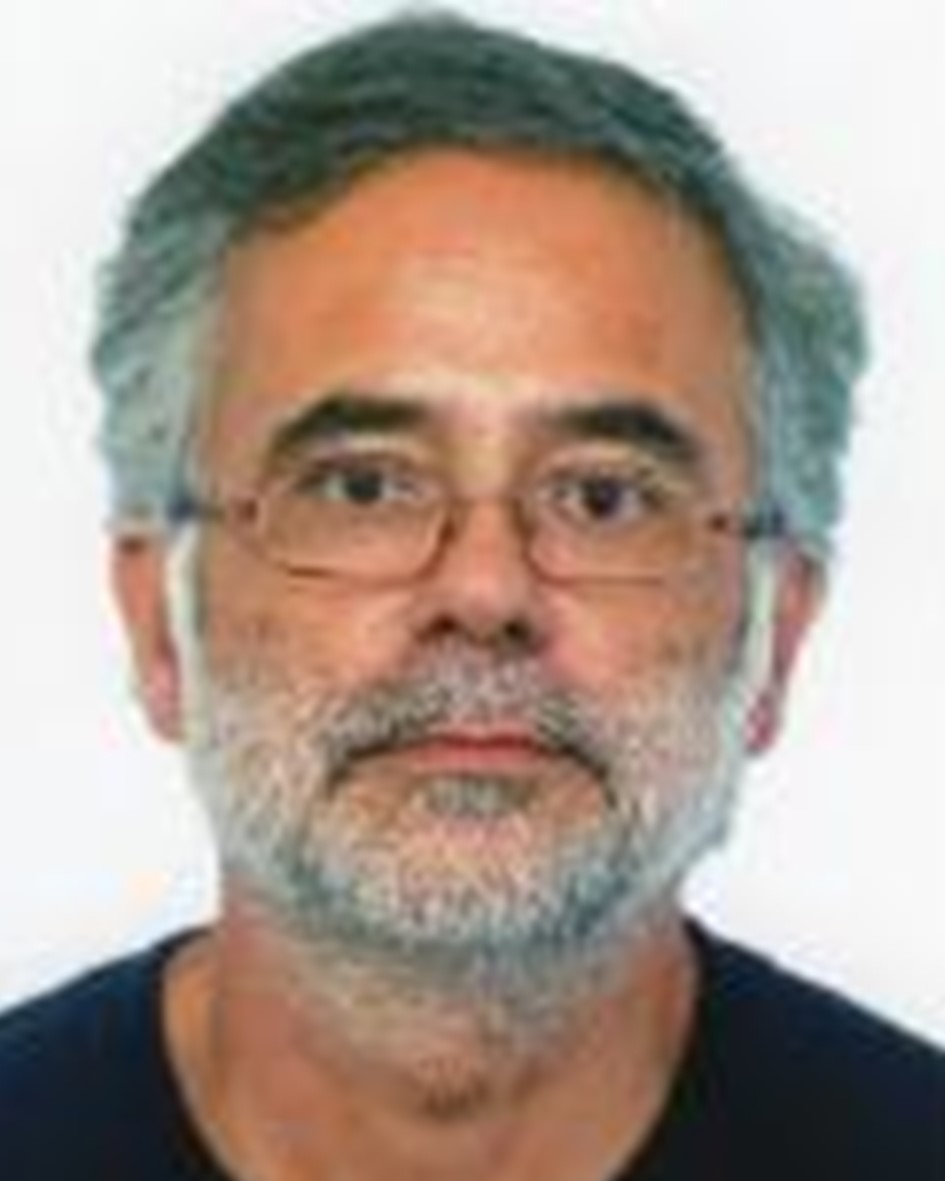Efficient Photogeneration: A Means of Synthesising Highly Reactive Molecules
An infographic highlighting the photogeneration of nonacene on nanostructured graphene
We would like to share an infographic highlighting the excellent work by Fernando Martín, Amadeo L. Vázquez de Parga et al. on the synthesis of highly reactive large organic molecules by photogeneration on graphene! Check out the infographic below to learn more or get the full story from their Nanoscale Horizons article.
Efficient photogeneration of nonacene on nanostructured graphene
Cosme G. Ayani, Michele Pisarra, José I. Urgel, Juan Jesús Navarro, Cristina Díaz, Hironobu Hayashi, Hiroko Yamada, Fabian Calleja, Rodolfo Miranda, Roman Fasel, Fernando Martín and Amadeo L. Vázquez de Parga
Nanoscale Horiz., 2021, DOI: 10.1039/D1NH00184A

Meet the authors

|
Amadeo L. Vázquez de Parga
Amadeo L. Vázquez de Parga obtained his doctorate in June 1992 in the Universidad Autonoma de Madrid. The topic of the thesis was the design and construction of an ultra-high vacuum tunneling (STM) microscope capable of routinely obtaining atomic resolution. It was the first of these instruments that worked in Spain. After obtaining the doctor’s degree, he completed a postdoctoral stay at the IBM laboratories in Rüschlikon, Zürich (Switzerland), investigating the excited luminescence in the tunnel process. It should be noted that STM was invented in this laboratory and two of its researchers were awarded the Nobel Prize in Physics in 1987 for this discovery. Since 2019 I hold a post of full professor in the department of Physics of the Condensed Matter in the UAM and since 2008 I am also Associate Senior Researcher in IMDEA-Nanoscience. The years 2002 and 2003 was a visiting researcher at the Radboud University, in Nijmegen (Holland) where I was performing microscopy experiments with a spin polarized tunnel effect. From January until December 2018 I have been invited researcher at the ARC Centre of Excellence FLEET in the group of Prof. M. Fuhrer at Monash University, Melbourne (Australia). I have been working on growth and characterization of TMDS. I have conducted short research stays at various centers, including the Lawrence Berkeley Laboratory, California (1990), the Max Planck Institute in Halle (Germany) (2000), Gakushuin University, Tokyo (Japan) (2004) and University of Chiba in Chiba, Japan (2014). |










